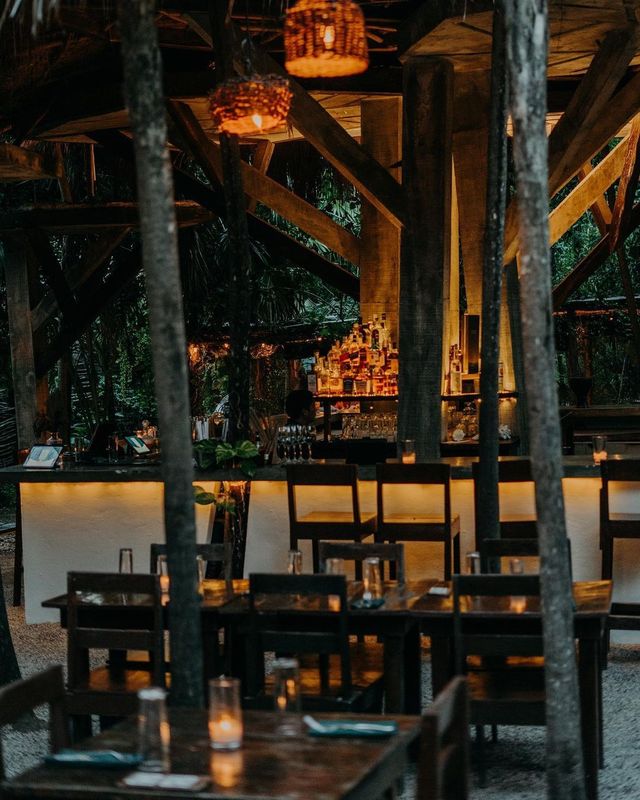Instagrammable Restaurants Islamabad: Picture-Perfect Dining Knowledge
Instagrammable Restaurants Islamabad: Picture-Perfect Dining Knowledge
Blog Article
Savor Genuine Oriental Food With a Pan-Asian Spin for a Cooking Adventure
Starting a cooking trip with genuine Asian cuisine, enhanced with a Pan-Asian spin, supplies an one-of-a-kind possibility to discover the abundant tapestry of flavors that define the area's varied culinary traditions. This experience invites you to appreciate the beautiful balance of tastes-- sweet, salted, spicy, and sour-- harmonized by fragrant natural herbs and flavors. Visualize the cutting-edge blend of Thai curry and ramen or the unforeseen pleasure of sushi burritos. As you ponder these enticing recipes, think about the cultural stories and historical impacts that form them, each bite providing a story waiting to be found.

Exploring Pan-Asian Tastes
In the world of worldwide gastronomy, Pan-Asian food stands apart for its remarkable diversity and the unified interaction of flavors from different Asian cultures. This cooking method commemorates the rich practices and distinct ingredients discovered throughout the continent, producing a tapestry of preferences that is both interesting and gratifying. Secret to Pan-Asian cuisine is its ability to balance contrasting flavors-- wonderful, salty, spicy, and sour-- while highlighting the quality and top quality of each active ingredient.
From the umami-rich soy sauce of Japan to the fiery chili peppers of Thailand, Pan-Asian cuisine provides a considerable scheme of flavors. These elements are frequently integrated in innovative methods, improving recipes with layers of intricacy. For instance, using great smelling natural herbs such as lemongrass and cilantro, usual in Vietnamese and Thai cuisine, adds a rejuvenating illumination to recipes, while the unification of coconut milk delivers a creamy, rich structure.
The emphasis on fresh produce and fragrant seasonings makes certain that each dish is not just a banquet for the palate however also for the senses. Pan-Asian food welcomes restaurants to get started on a cooking trip, exploring the large and differed landscapes of Eastern gastronomy with every bite.
Blend Dishes to Try
While Pan-Asian cuisine is celebrated for its conventional flavors, the modern-day culinary landscape is progressively embracing blend recipes that blend these timeless aspects with influences from various other regions. This innovative strategy not just honors the abundant heritage of Oriental cookeries yet additionally introduces unique preference experiences that interest modern tastes buds.
A prime instance of such a fusion dish is the Korean-Mexican taco, where marinaded bulgogi beef is covered in a warm tortilla, covered with kimchi and a zesty gochujang-infused salsa. This combination marries the strong, savory flavors of Korea with the lively, fresh components of Mexican food. In a similar way, sushi burritos have actually gained appeal, joining together the fragile virtuosity of Japanese sushi with the passionate, hand-held comfort of a burrito, usually featuring fusion components like tempura shrimp and avocado with a drizzle of wasabi mayo.
An additional significant recipe is Thai curry ramen, which instills the luscious, fragrant seasonings of Thai curry right into the calming broth of traditional Japanese ramen, creating a harmonious blend that tantalizes the senses. These combination meals extend beyond plain novelty; they represent a cooking dialogue between societies, motivating expedition and advancement in the globe of Pan-Asian food.
Essential Components and Flavors
To genuinely value Pan-Asian cuisine, one should comprehend the necessary active ingredients and seasonings that develop its structure. This diverse culinary design attracts from an abundant tapestry of Eastern traditions, utilizing a harmonious blend of appearances asian fusion restaurant and flavors. Secret components include soy sauce, fish sauce, and oyster sauce, which impart a mouthwatering umami depth necessary to Oriental meals. Corresponding to these are rice vinegar and mirin, offering a fragile level of acidity and sweetness.
Fragrant elements are crucial, with ginger, garlic, and lemongrass being ubiquitous throughout various Pan-Asian dishes. These components provide a fragrant base that improves the complexity of tastes. Flavors such as celebrity anise, cardamom, and cinnamon present warmth and character, echoing impacts from areas like China and India.

Food Preparation Methods and Tips
Understanding the art of Pan-Asian food calls for knowledge with its distinct food preparation strategies, each adding to the vibrant tapestry of flavors this culinary tradition is celebrated for. Central to these methods is the stir-fry, a rapid cooking method that preserves the dietary honesty and vibrant shades of ingredients. Using a frying pan, the stir-fry method permits also warmth circulation, essential for achieving the particular appearance and taste equilibrium of Pan-Asian meals.
One more fundamental technique is steaming, particularly common in Chinese cuisine. This gentle method maintains the all-natural tastes and nutrients of components, making it excellent for seafood and veggies. Dumplings, a precious staple, often benefit from steaming, leading to soft, succulent textures.
Cooking, likewise essential, imparts great smoky depths to recipes such as Oriental bulgogi or Japanese yakitori (best asian restaurant Islamabad). This strategy commonly involves seasoning components, permitting flavors to pass through deeply before cooking over an open fire or hot plate
Lastly, mastering the art of balancing flavors-- wonderful, sour, salted, bitter, and umami-- is vital. Correctly layering these components can raise a recipe from common to extraordinary, using a facility and satisfying cooking experience that embodies the essence of Pan-Asian food.
Dining Experiences Worldwide
Around the world, Pan-Asian food offers an unrivaled eating experience, commemorated for its rich tapestry of flavors and vivid discussions. This culinary sensation has gone beyond cultural borders, catching the hearts and tastes of food lovers worldwide. In worldwide cities fresh York, London, and Sydney, Pan-Asian dining establishments act as melting pots where cooking customs from Thailand, Japan, China, and beyond merge, giving restaurants with an eclectic mix of recipes that highlight the region's diversity.
The worldwide appeal of Pan-Asian food lies in its capacity to offer both authenticity and development. Cooks masterfully wed conventional components such as lemongrass, soy sauce, and miso with contemporary techniques, resulting in recipes that are both acquainted and refreshingly brand-new. This fusion permits restaurants to begin on a culinary journey that respects heritage while welcoming modernity.
In addition, eating experiences are raised through attentively made atmospheres that show the values of Pan-Asian aesthetics. From minimalist Japanese-inspired interiors to lively Thai-themed spaces, each dining establishment provides a special ambiance that complements the cooking offerings. Because of this, clients are not simply taking in a meal yet partaking in a cultural experience, making Pan-Asian eating an absolutely worldwide phenomenon.
Conclusion
The expedition of Pan-Asian cuisine offers a profound understanding of the detailed interaction of tastes and culinary practices across Asia. By embracing blend meals such as Thai curry ramen and sushi burritos, the culinary trip not only highlights the adaptability of traditional active ingredients however also showcases cutting-edge contemporary methods. This gastronomic experience, enriched by cooking approaches and vital spices, supplies an one-of-a-kind opportunity to value the multiculturalism and culinary creativity that specify Pan-Asian food on a worldwide scale.
Beginning on a culinary journey via authentic Eastern food, enhanced with a Pan-Asian spin, offers a special opportunity to check out the abundant tapestry of tastes that define the region's varied cooking customs.In the world of global gastronomy, Pan-Asian cuisine stands out for its impressive diversity and the unified interaction of flavors from various Oriental societies. Key to Pan-Asian food is its capability to stabilize different tastes-- sweet, salty, spicy, and sour-- while highlighting the freshness and top quality of each ingredient.

Report this page